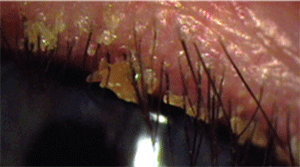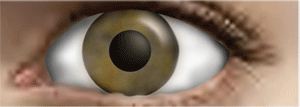 Successful contact lens wear begins with a good evaluation and presentation of the lens options. Case presentation is particularly important for multifocal candidates, many of whom do not even know contact lenses are an option for their vision correction. Even though we’re focusing on translating multifocals, the principles are the same for spherical and toric GP lenses.
Successful contact lens wear begins with a good evaluation and presentation of the lens options. Case presentation is particularly important for multifocal candidates, many of whom do not even know contact lenses are an option for their vision correction. Even though we’re focusing on translating multifocals, the principles are the same for spherical and toric GP lenses.
Ideal Candidate Selection
Moderate uncorrected hyperopes (+1.50D or greater) who think they see well in the distance may be the ideal candidates. In reality, they don’t see nearly as well in the distance as they think, so their vision will improve at all distances.
The low hyperope and the low myope may not be great candidates—the former sees well unaided in the distance, and the latter sees well unaided at near. These patients may experience a slight degradation of vision that they do not wish to tolerate. Additionally, large pupils may cause ghosting with translating designs because the pupil may be in both the distance and near zones simultaneously.
Translating multifocals are best suited for those with the need for very sharp near and distance vision, while many simultaneous designs are best for those with a high demand for intermediate vision, such as those who spend most of their day at the computer.
1. In this patient, we can clearly see mixed blepharitis (Staphylococcus and Seborrhea).
Beyond corneal health, topography and refraction, special attention should be given to the eyelids. You should:


2.
In this ideal lid position, the lower lid is at the lower limbus, and
the upper lid is below the upper limbus. This allows the lower lid to
support the lens on downgaze to allow for translation into the near
segment, and the upper lid will be over the superior edge of the lens
for increased comfort.
• Inspect lids and lashes.
• Express meibomian glands.
• Measure tear break up time.
• Evert the upper lids and record any giant papillary conjunctivitis and injection. This way, you’ll know whether future lid problems were pre-existing or caused by the current lenses or solutions.
Always evaluate any contact lens wearer or candidate for the following:
• Any infection problems (figure 1).
• Allergies.
• Meibomian gland dysfunction.
• Ocular surface disease.
Only after any lids and corneal problems are under control should you begin the contact lens fitting process.
It is also important to evaluate the position of the lids. For a translating multifocal or bifocal, the lower lid should be tangent to the lower limbus, and the upper lid should be 1mm to 2mm below the superior limbus. The lower lid will support the lens on downgaze and allow for easy translation. The upper lid should be over the superior lens edge for maximal comfort (figure 2). When the lower lid is excessively low, the zone of near power is too low for easy translation and this will likely result in poor near acuity.
The Power of Suggestion
With the lens materials and designs currently available, the success with multifocal and bifocal lenses should be similar to the success of toric lens fits. To achieve this level of success, both the contact lens fitter and patient must:
• Be committed to the process.
• Have realistic expectations.
• Understand the limitations to this means of vision correction.
Just because your patients do not bring up the topic of contact lenses does not mean they are not interested. So, make specific recommendations during case presentation, including multifocal or bifocal contact lenses when appropriate. Patients who don’t inquire about contact lens correction may have been told that they could not wear lenses or think they are too old. Remember: If you don’t present patients with lens options, they may never know that they can enjoy the many benefits of contact lens wear.
Next month, we will discuss case presentation and troubleshooting translating multifocals and bifocals.


